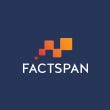As digitization disrupts every industry, including healthcare, the ability to capture, share, and transmit data has become a priority. Machine learning, big data, and artificial intelligence (AI) can help solve the challenges posed by massive amounts of data.
ML can also help healthcare organizations meet growing medical needs, improve operations, and reduce costs. Bedsides, machine learning innovations can help healthcare professionals find and treat diseases with more effective, accurate and personalized care. It reveals how technological innovation leads to more effective and holistic nursing strategies, which can improve patient outcomes.
Types Of Machine Learning
ML allows machines to go through the learning process. It does this by developing a basic model to solve the problem. The machine learning algorithm changes the model each time it examines the data and discovers a new pattern. This method makes learning possible and provides increasingly accurate results. The algorithm can complete the entire learning process without programming.
Machine learning can be:
- Supervised
- Unsupervised
- Semi-supervised
- Augmented.
According to Gartner, by 2022, supervised learning (a type of machine learning that inputs historical input and output data and classified into algorithms) will continue to be the most popular type of machine learning.
In unsupervised learning, the algorithm can independently identify data patterns without prior classification. It has several applications. For example, in the industrial sector, you can identify faults in factory systems before they occur through predictive maintenance.
Semi-supervised learning is somewhere between supervised and unsupervised. Semi-supervised learning algorithms can combine classified data and unclassified data to build a problem-solving model. A recent study showed the promise of semi-supervised learning models to accelerate drug discovery. Augmented learning teaches algorithms through a reward system. Algorithms produce various results and learn to choose the correct result; they are rewarded for expected behavior and punished for unwanted behavior. According to a recent study, augmented learning can be used in a number of applications, including autonomous robotic nanofabrication.
Applications of ML In Healthcare
ML applications can potentially improve the accuracy of treatment plans and health outcomes through algorithmic processes. For example, deep learning (a type of complex machine learning that mimics the function of the human brain) is increasingly used in radiology and medical imaging. With the help of neural networks that can learn from data without supervision, deep learning applications can detect, identify and analyze cancerous lesions in images. Faster processing speeds and cloud infrastructure enable machine learning applications to detect anomalies in images that are invisible to the human eye, helping future advancements in machine learning in the medical field that continue to change the industry. Machine learning applications under development include diagnostic tools for diabetic retinopathy and predictive analysis of breast cancer recurrence based on medical records and images.
Major Areas Of ML Impact In Healthcare
Data Integrity
Gaps in healthcare information can lead to incorrect predictions made by machine learning algorithms, which can negatively affect decision-making in the clinical setting. Since healthcare data was originally designed for EHR, it must be prepared before machine learning algorithms can use it effectively. Professionals are responsible for maintaining the integrity of the data. Activities performed by health informatics professionals include data collection, analysis, classification, and cleansing.
Recordkeeping
ML in health informatics can simplify record keeping, including electronic health records (EHR). Using AI to improve electronic medical record management can improve patient care, reduce care and management costs, and streamline operations. An example includes natural language processing, which allows clinicians to capture and record clinical notes, eliminating manual operations; ML algorithms can also perform electronic medical record management by providing clinical decision support, automated image analysis, and integrated telemedicine technology. These systems are very useful for doctors. The language is easier to use.
Analytical Prediction
The combination of machine learning, health informatics, and predictive analytics provides opportunities to improve healthcare processes, transform clinical decision support tools, and help improve patient outcomes. The future of ML in healthcare lies in its ability to use health informatics to predict health outcomes through predictive analytics, leading to more accurate diagnoses and treatments, and improving clinician perception on personalized and similar treatments. Machine learning can also provide additional value from predictive analytics by transforming data for decision makers to find process gaps and improve overall healthcare business operations.
Visualizing The Future Of Healthcare
Health informatics professionals are at the entrance of the opportunity and play a key role in integrating machine learning into medical and healthcare processes. The deep understanding of technology and how to apply it to improve patient care and outcomes provides tremendous value to the evolving healthcare industry that is increasingly reliant on data. Machine learning and deep learning algorithms can shorten the time required to review patients and medical data, thus speeding up patient diagnosis and recovery.
Machine learning has proven to be very useful in the current global pandemic. As reported by HealthITAnalytics, deep learning tools can predict the rise of COVID-19 in United States counties with an accuracy rate of nearly 65%.
As healthcare organizations seek to integrate machine learning into healthcare and medical processes, this is the primary responsibility of healthcare informatics professionals to ensure healthcare data is reliable, making it a top priority. Several technology-driven healthcare concepts have shown promise for improving healthcare services in the years to come. These innovations will also change the role of health informatics professionals.
